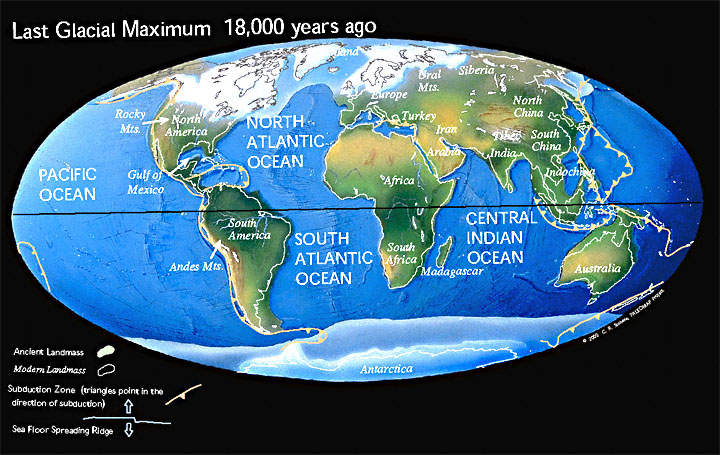quote:
only find it interesting that scientists admit the seas lowered
Sea level change has been a staple of geology for some time now.
Here are images of maps from two times when sea level was higher and parts of continents were covered with epeiric seas:
Late Cretaceous:

Early Devonian:

Here's a map of more recent times showing lower sea levels (which are quite rare). This is probably the time of GBR emergence you're talking about.

From scotese.com
For at least the last ten years, and probably twenty, the response of depositional systems to sea level has been the emphasis of the science of sequence stratigraphy. That was before my time.
Sea level change happens on two scales: local and global.
Local changes are actually the land mass bobbing up and down with the global sea level nearly constant. This isn't important to your discussion unless it is the cause of the Great Barrier Reef rise.
Global changes have multiple potential causes. The most important one that causes the magnitude of change is the mid-ocean ridge spreading rate. MOR spreading rates go up, the ridges increase in volume, displacing more water. This happens on very long timescales so most non-geologists don't even think about it.
Second are glacial cycles. Water gets trapped as ice driving sea levels down. We may be seeing this in action now but it is rather slow by human timescales. Interestingly, the sea level rise from melting glaciers is faster than the fall due to growing glaciers, so that when you plot glacier-driven eustacy you don't get nice sine-waves. The reason is obvious if you give it a moment's though.
The third, least significant one happens on timeperiods low enough that we see it right now, in response to changing climate. The oceans warm up, and expand thermally.
When you make all three of these mechanisms operate simultaneously and throw in some tectonic changes just for extra confusion, you notice that sea level is
always changing, and it can only be either going up or down.
Then when you go to the rock record, and look at the BIG picture, you find that sedimentary geology is basically a record of slow sea level falls (regression) and sea level rises (transgressions) with a few events mixed in. All the features we see like deltas and fans and beaches, and river systems that used to be isolated events to sedimentary geologists are just smaller players in that bigger picture, and they make more sense now. If you're interested in sea level change, my recommendation is that you do a Google (we all seem to like Google around here) search on "sequence stratigraphy" and/or "marine regression" and see what you find.
This message has been edited by gene90, 05-08-2004 11:37 AM


 ™ Version 4.2
™ Version 4.2